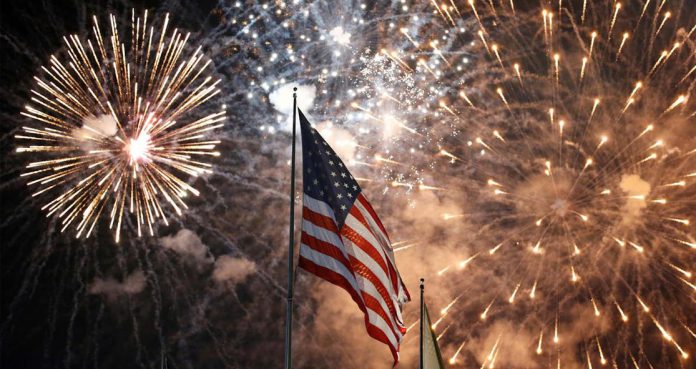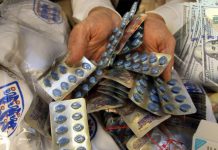People say it is hard to imagine Independence Day without celebrating it with fireworks. How did this tradition come from?
Setting off those small explosions of all colors and shapes, particularly red, white and blue, on July 4 has become a tradition to mark the big day in the history of the United States.
The story of how fireworks became a tradition on July 4 dates back to the summer of 1776, during the Revolutionary War. On July 1, Continental Congress delegates were in Philadelphia, who were arguing over whether the 13 original colonies should declare their independence from the British Parliament and King George III.
On July 2, delegates from 12 colonies voted in favor of independence and the motion carried.
On July 3, Congress revised a draft of the declaration that was composed by Thomas Jefferson, an excited John Adams took up his pen to write to his wife, Abigail.
John Adams, who was an American statesman, attorney, diplomat, writer, and Founding Father, wrote to his wife, “The Second Day of July 1776, will be the most memorable Epocha, in the History of America. I am apt to believe that it will be celebrated, by succeeding Generations, as the great anniversary Festival…It ought to be solemnized with Pomp and Parade, with Shews, Games, Sports, Guns, Bells, Bonfires and Illuminations from one End of this Continent to the other from this Time forward forever more.”
On July 4, Congress officially accepted the Declaration of Independence, though most delegates of Congress did not even sign the declaration until August 2.
Although some celebrations greeted the declaration’s first public readings on July 8, in Pennsylvania and New Jersey, the first organized Independence Day celebration took place on July 4, 1777, in Philadelphia.
On July 5, 1977, the Pennsylvania Evening Post reported, “Yesterday the 4th of July, being the anniversary of the Independence of the United States of America, was celebrated in this city with demonstrations of joy and festivity. About noon all the armed ships and gallies in the river were drawn up before the city, dressed in the gayest manner, with the colors of the United States and streamers displayed.”
The Evening Post further reported, “After each ship’s cannon fired a 13-gun salute (in honor of the 13 colonies), the festivities continued, including an elegant dinner, a military demonstration and a performance by a Hessian band. The evening was closed with the ringing of bells and at night there was a grand exhibition of fireworks (which began and concluded with thirteen rockets) on the Commons, and the city was beautifully illuminated.”
On July 4, Adams’ hometown of Boston saw its own fireworks display, as Colonel Thomas Crafts of the Sons of Liberty set off fireworks and shells over Boston Common.
This is when it all started. Various cities continued the tradition of celebrating Independence Day by holding picnics, parades, speeches and fireworks, displaying their patriotism.
In 1783, Boston declared July 4 an official holiday. In 1870, Congress declared Independence Day as an official holiday. In 1898, a reporter wrote, “The American Fourth of July is the greatest event the maker of firecrackers knows.”
However, every Independence Day brings a lot of fireworks-associated accidents, injuries, burns and even deaths, which is why many counties and states passed bans on different types of fireworks. Also, there have health problems reported with the use of fireworks, making public health officials to offer fireworks safety tips. In spite of these safety concerns and tips, the United States spends approximately $1 billion on fireworks each Independence Day.























